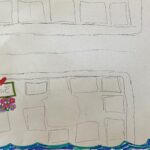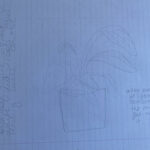If we can use these strategies we are better equipped to encourage students to use critical thinking skills and other mental and emotional tools to help them investigate and learn more about the things the see, hear, and learn:
- Establish historical significance
- Use primary source evidence
- Identify continuity and change
- Analyze cause and consequence
- Take historical perspectives, and
- Understand the ethical dimension of historical interpretations.
My evidence of this is my own reflection for Week 3 of how “Social Studies connect students to the world and the complex challenges.” I have attached the audio file as an artifact to show my own use of these strategies. It shows my use of these strategies by walking through the picture attached above (Circa 40s or 50s), within which my own Great-great Grandfather (bottom, second from the right) is the seen amongst other affluent men in São Gonçalo do Sapucaí. I am struck by how naturally these strategies can arise once you have a foundation of using a critical lens when taking in new information. This will inform my teaching by ensuring I model for students how to consider many components of whatever we are studying or investigating, and that “there is more than meets the eye” and that pictures can say a lot more than we may realize about identity and history.





